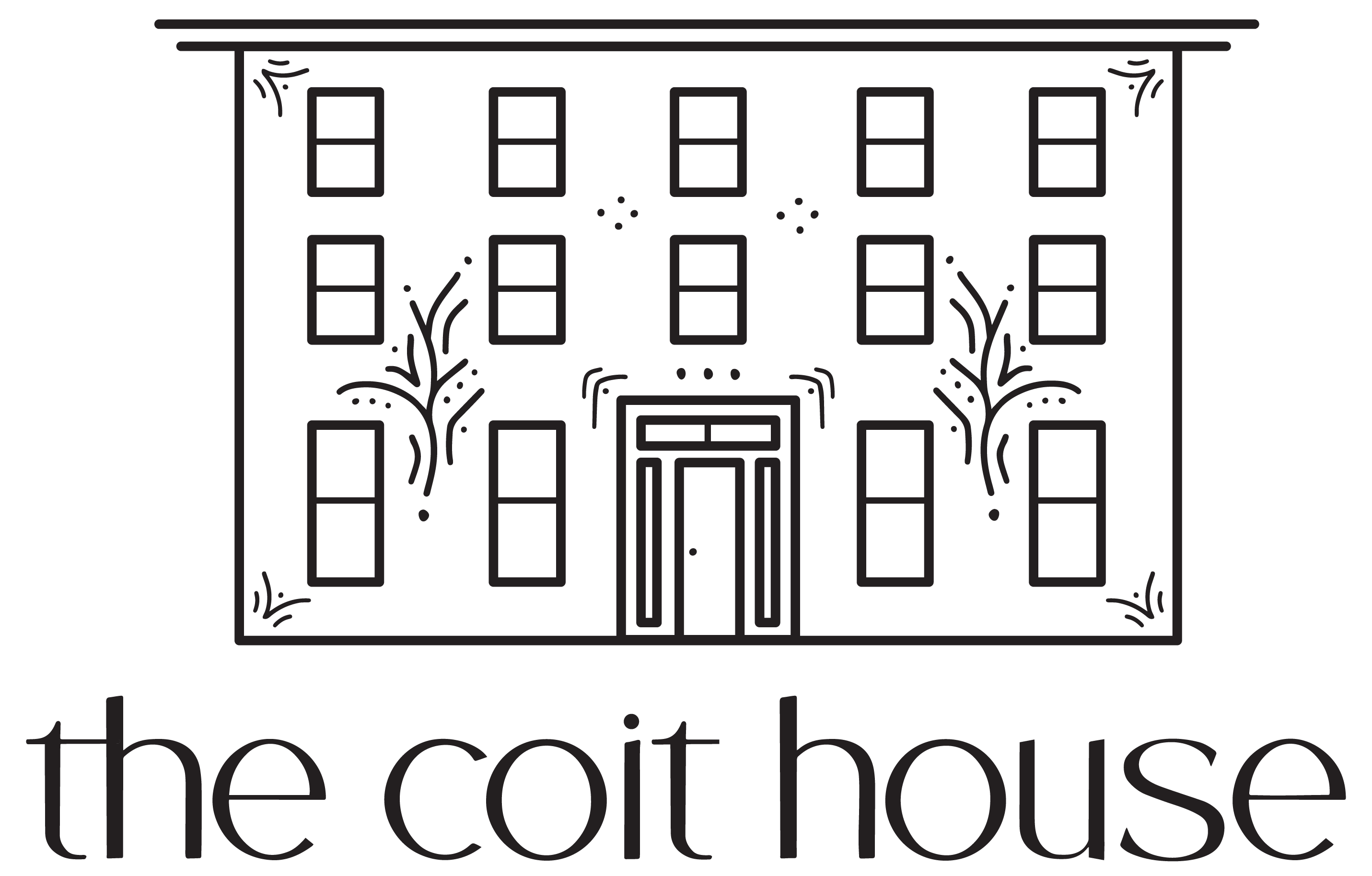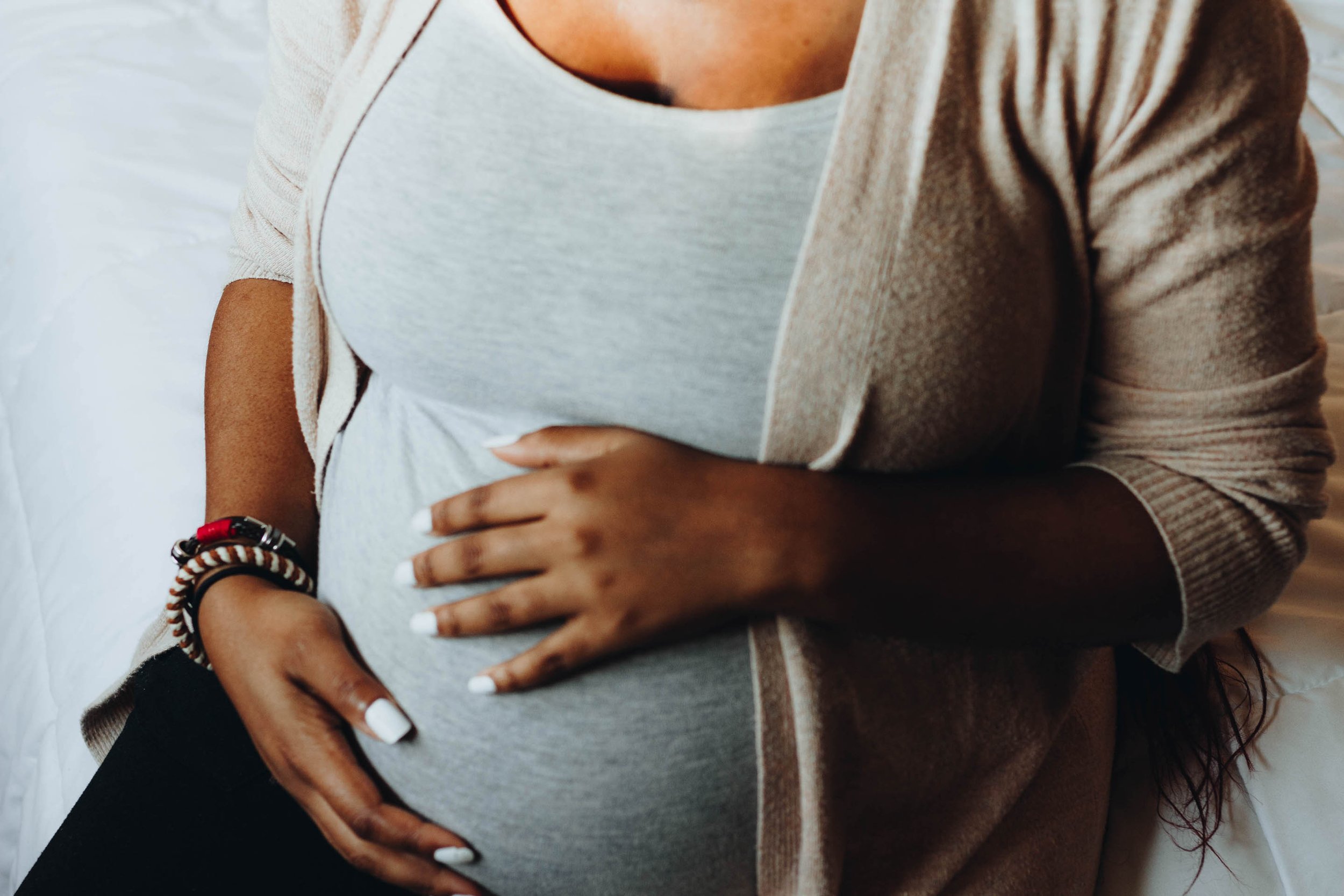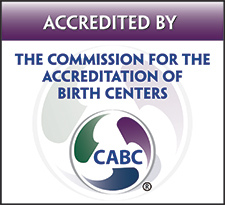The number of people giving birth at age 35 or older has been steadily rising for several decades in the United States, and it is more common than ever for expecting parents to be at least 35 years old. This trend has been seen around the world, and is linked to a variety of medical, social, and cultural factors. At Fika, over 21 percent of our clients are 35 years or older when they give birth.
Pregnant people who are 35 years or older are often referred to as “advanced maternal age” by care providers, although we don’t love this label. The vast majority of people who fall into this category have normal pregnancies and healthy babies, which means the increased pathologization is largely unnecessary and sometimes even detrimental. The likelihood of experiencing certain pregnancy and birth complications does increase with age. But, this simply means that maternal age is one of many important factors to consider in combination with each other when pregnant people and their providers make decisions together about their care. Many people, regardless of age, have one or more risk factors for developing a pregnancy-related condition (check out our blog posts on gestational diabetes or hypertension) and go on to have uncomplicated pregnancies and births.
Potential Benefits
There are many benefits to giving birth at age 35 and older. Research has shown that people who are older when they give birth are able to stick with better health behaviors and routines during their pregnancies. Increased age can also be linked with being more socioeconomically advantaged and educated. People who are 35 or older even seem to be happier after giving birth than those who are younger! In high-income countries like the U.S., their children have better health and educational outcomes. Moreover, breast/chestfeeding rates are higher for people 35 or older. Some studies even link giving birth at an older age to increased cognition, verbal memory, and problem-solving abilities as well as a longer lifespan.
Potential Risks
The risk of some pregnancy and birth complications increases with age, but most of these increases are slight and gradual. The risk of miscarriage, however, increases more markedly with a pregnant person’s age from about 18 percent at age 30, to about 20 percent at age 35, to about 40 percent at age 40. This increased risk is related to diminishing egg quality as people get older, rather than the ability to carry a pregnancy to term. Scheduling a preconception visit with the midwife can help set you up for the best chance of conception when you’re ready to start trying and for a healthy first trimester. In addition, many of our clients have had wonderful experiences at local fertility specialists, such as CNY Fertility and Buffalo IVF.
Certain genetic abnormalities are more common in pregnancies of people age 35 and over. One of these is Down syndrome, which occurs when there is an extra copy of Chromosome 21. The rate of having a baby with Down syndrome increases from one in 1,340 at age 25, to one in 353 at age 35, to one in 35 at age 45. Studies have also shown that there is a slightly higher risk of stillbirth for people who are 35 or older, and the risk increases with age. This outcome is rare, and rates of stillbirth have decreased significantly over the past several decades with advancements in perinatal healthcare. The risk of stillbirth is lower for people who are healthy, do not have other risk factors, and/or have given birth before. More research is needed to understand why people experience an increased risk of stillbirth with age.
Recommendations
Currently, there is no consensus among researchers or providers on how to care for pregnant people 35 and older at the end of pregnancy. Neither the American College of Gynecologists and Obstetricians (ACOG) nor the Association for Certified Nurse Midwives (ACNM) offer official guidelines. More research is needed to provide consistent, evidence-based recommendations on caring for these families. Below are practices that some providers choose to follow.
Many advise that people 35 years and older should have increased fetal monitoring or testing towards the end of pregnancy with the goal of identifying babies early who are at risk of stillbirth. The Society for Maternal and Fetal Medicine, however, states there is insufficient evidence to show that fetal testing for pregnant people 35 and older can reduce the risk of stillbirth and instead advises that these decisions be made on an individual basis after consideration of the pros and cons of such testing.
The tests typically used for increased fetal monitoring at the end of pregnancy are the non-stress test (NST) and biophysical profile (BPP). An NST uses an electronic fetal heart monitor to assess the baby’s heart rate in response to their movements. During this test, the two sensors of the electronic fetal monitor will be placed on your abdomen while you lay down for 20 minutes.Your baby’s heart rate will be measured continuously during this time. An NST is either reactive, which means everything looks good, or non-reactive, which means further testing (BPP) is indicated. A BPP involves two steps: an NST and an ultrasound. The BPP assesses five components of your baby’s health: body movements, muscle tone, breathing movements, amniotic fluid, and heartbeat. Each component is given a score of zero or two, which are then added up for a total score of zero to ten. In general, a score of eight to ten is considered normal, while a score below this indicates further testing or intervention may be needed.
Some providers also recommend routine induction of labor at 39 weeks for pregnant people 35 and older to prevent stillbirth. The chance of stillbirth increases slightly for people of all ages during the last weeks of pregnancy. A few studies have shown the largest increase in risk happens around 39 weeks for people 35 and older, but more research is needed to provide guidance on how to care for people at the end of pregnancy. In one study, researchers estimated that if all pregnant people in the U.K. age 40 and older were induced at 39 weeks, it would take 9,350 inductions to prevent one stillbirth.
Waiting for labor to start on its own has many benefits, and people over the age of 35 are at an increased risk for failed induction and cesarean section. In fact, the cesarean rate rises dramatically with age from 33 percent at age 30 to 34, to 38.5 percent at age 35 to 39, to 45 percent at age 40 to 44. Regarding interventions like cesareans, it is challenging to quantify the extent of provider bias in decision-making. Once people are categorized as “advanced maternal age,” and subsequently “high-risk,” their care during pregnancy and birth is often dictated by these labels.
Care at Fika Midwifery
Midwife-led care has been shown to drastically reduce the rate of interventions with no increased risk to babies for people who are 35 or older. At Fika Midwifery, we offer a range of options during pregnancy and birth so that all parents can make informed decisions as they grow their families.
We encourage all clients to consider genetic screening and testing options, including carrier screening, non-invasive prenatal testing, amniocentesis, and chorionic villi sampling. These testing mechanisms can help identify the potential risk of having a baby with a vast number of genetic conditions. We can also provide referrals for those who want to consult with a genetic counselor free-of-cost prior to testing or after obtaining their results. This should be covered by most insurance companies, and the lab we use, Invitae, offers affordable self-pay rates.
Beginning at 41 weeks, all of our clients are offered regular NSTs in our office on one of our comfy couches. These may begin sooner or with increased frequency, depending on the pregnant person’s preference, health history, current health status, and any other risk factors. In addition, we can offer many non-pharmacological induction methods in the community setting, although if you feel you desire early induction (prior to 42 weeks) based solely upon your age, we recommend that you consider planning hospital birth.
For more information on pregnancy at age 35 or older, check out this excellent article from Evidence Based Birth.
Author Mary Badame is the Quality Assurance Manager at Fika Midwifery and is a passionate advocate for midwife-led care, increased birth options, and better reproductive healthcare for everyone.
